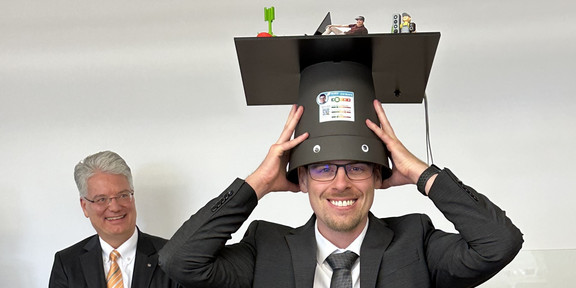Dr.-Ing. project on Cellular Internet of Things Networks successfully completed!
- News
- Type
- News

The CNI team congratulates Dr.-Ing. Pascal Jörke on the successful defense of his dissertation entitled "Performance Evaluation of Cellular Internet of Things Networks".
In the evolution of mobile communications technology, not only the personal communication of people via smartphones is playing an increasingly important role, but also the wireless communication between technical systems. Based on the so-called machine-to-machine communication (M2M), the concept of networking “things” of all kinds (sensors, actuators, etc.) is also summarized under the term Internet of Things (IoT). In recent years, numerous radio systems have been proposed for IoT applications that can be operated in both unlicensed and licensed frequency ranges (e.g. LoRa, Zigbee, and Cellular-IoT). These systems are collectively referred to as LPWAN (Low Power Wide Area Networks).
In his work, Pascal Jörke conducts a scientifically sound performance evaluation for the design goals, based on specially designed analytical and simulative models, since the system concepts were described in standards at the time of the study, but only gradually became available in the course of the work. The experiments made possible by this validate the system models used in the work.
Overall, Mr. Jörke has succeeded in examining the Cellular IoT area in unprecedented depth with regard to its actual performance beyond marketing announcements. His work therefore offers not only a comprehensive scientific contribution to the Cellular IoT research field but also valuable recommendations for the operation and use of this technology by network operators and IoT application developers. This further contribution is made particularly tangible by the proposal of an energy label for IoT applications, which motivates the use of IoT applications that are particularly sustainable for an application.

